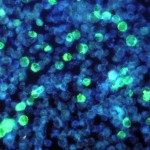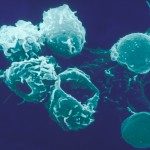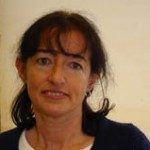Link to Pubmed [PMID] – 27141929
Sci Signal 2016;9(426):ra45
The Notch signaling pathway is conserved throughout evolution, and it controls various processes, including cell fate determination, differentiation, and proliferation. Innate lymphoid cells (ILCs) are lymphoid cells lacking antigen receptors that fulfill effector and regulatory functions in innate immunity and tissue remodeling. Type 3 ILCs (ILC3s) reinforce the epithelial barrier and maintain homeostasis with intestinal microbiota. We demonstrated that the population of natural cytotoxicity receptor-positive (NCR(+)) ILC3s in mice is composed of two subsets that have distinct developmental requirements. A major subset depended on the activation of Notch2 in NCR(-) ILC3 precursors in the lamina propria of the small intestine to stimulate expression of the genes encoding the transcription factors T-bet, RORγt, and aryl hydrocarbon receptor (AhR). Notch signaling contributed to the transition of NCR(-) cells into NCR(+) cells, the more proinflammatory subset, in a cell-autonomous manner. In the absence of Notch signaling, this subset of NCR(-) ILC3s did not acquire the gene expression profile of NCR(+) ILC3s. A second subset of NCR(+) ILC3s did not depend on Notch for their development or for increased transcription factor abundance; however, their production of cytokines and cell surface abundance of NCRs were decreased in the absence of Notch signaling. Together, our data suggest that Notch is a regulator of the plasticity of ILC3s by controlling NCR(+) cell fate.









